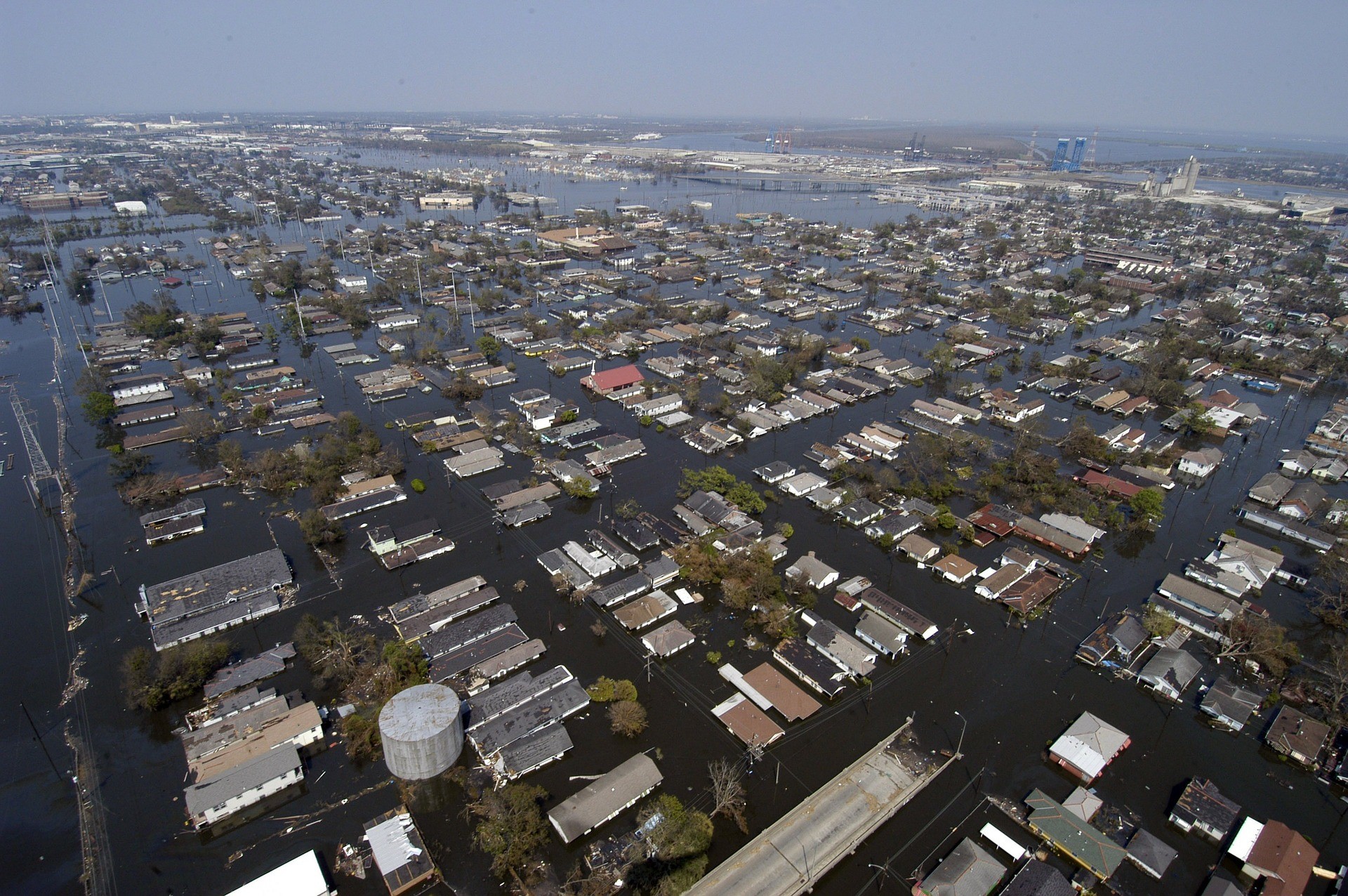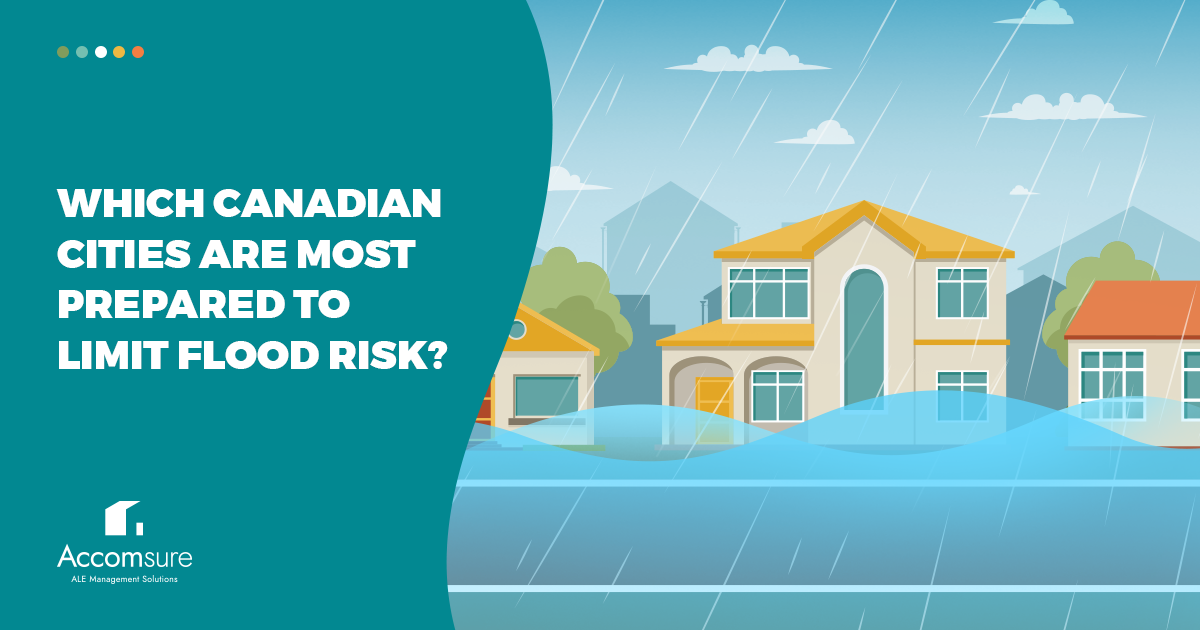Flood Preparedness in Canada: Which Cities are Most Prepared to Limit Flood Risk?
Flood risk is a major concern for those in the insurance industry. In recent years, Canadian insurers have been hit with many major floods resulting in millions of dollars in insured damages. For example, the 2013 Toronto flood resulted in nearly $1 billion in insurance payouts, and the Calgary flood in the same year was even more costly with $1.8 billion issued in insured damage.
As climate change continues to result in more severe weather events across Canada, insurance companies are finding themselves in hot water with the need to adapt rapidly in order to stay afloat.
Fortunately, insurance companies are not on their own when it comes to limiting the effects of floods. Many municipalities across the country have been making a conscious effort and sizable investment in flood risk mitigation. However, other cities aren’t quite as invested in their efforts to limit flood risks.
In this article, we’re taking a look at the most and least prepared Canadian cities to limit flood risk in their respective region. This information comes from a recent report by the Intact Centre on Climate Adaptation (ICCA).
The Most Prepared Cities to Limit Flood Risk

Although flood management is the responsibility of Canadian provinces and territories, they often delegate this responsibility to municipal governments. The following three Canadian cities have been identified to have the highest state of flood preparedness compared to other cities in Canada. This means that policyholders living in these cities may experience less severe flood damage, resulting in reduced claim costs and potentially fewer claims overall should a flood occur.
Edmonton, Alberta (B+)
Tied with the following two cities, Edmonton demonstrated strength in all domains of flood preparedness, including flood risk assessment, land use planning, residential property risk mitigation, and more.
With a recent project conducted by the Edmonton Power Corporation, Edmonton has assessed the city’s flood risk. They have used this information to enact zoning bylaws based on territories identified as floodplains. To further reduce the flood risk of residential properties, Edmonton has also created bylaws that require all new homes to install backwater valves and also provides a subsidy program to financially assist homeowners of older homes in installing this equipment on their property.
Regina, Saskatchewan (B+)
Regina also leads the list of cities with the greatest flood preparedness in Canada and demonstrated strength in several domains, specifically in regards to urban drainage assessment.
In recent years, Regina has invested heavily into upgrading its drainage and stormwater systems and performs several projects annually to keep these systems upgraded. Regina also has new detention ponds and has installed new culverts in the city. The city also reported above-average investment in residential property risk mitigation, but this is not their most significant area of focus.
Toronto, Ontario (B+)
Finally, Toronto rounds out the top three most prepared Canadian cities. Toronto specifically demonstrated strength in flood risk assessment, but the city reported lower than average investment in residential property risk mitigation.
In regards to flood risk assessment, Toronto has updated the G. Ross Lord Dam Emergency Preparedness Plan, which analyzed the state and capacity of the dam to handle future floods. However, Toronto, unfortunately, has no clear legislative requirements in relation to riverine flooding.
The Least Prepared Cities to Limit Flood Risk
Now that we’ve covered the cities that are most prepared to limit the risks associated with flooding, it’s time to discuss the cities that fall below the curve. If your policyholders live in these cities, they are likely at the greatest risk of more severe property damage should a flood occur.
Quebec City, Quebec (C+)
Although Quebec City demonstrates strength in land use planning and flood risk assessment, the city falls below average in other domains of flood preparedness, including residential property risk mitigation.
In regards to land use planning, Quebec City incorporates the provincial Protection Policy for Lakeshores, Riverbanks, Littoral Zones and Floodplains (PPRLPI) into its land-use planning bylaws. This policy states that although existing buildings can be maintained in flood zones, they can not be rebuilt following a flood and new construction is prohibited in these zones.
The city’s flood risk assessment initiatives include several flood risk mitigation projects, such as the construction of water retention structures. However, Québec City doesn’t have any grant programs to support home protection assessments.
Montreal, Quebec (C)
Although Montreal demonstrates strength in land use planning, the city falls below average in most other domains of flood preparedness. Unfortunately, as is the case with most cities in Canada, their residential property risk mitigation efforts are also subpar.
Just like Quebec City, Montreal’s policies also incorporate the PPLRI policy. Additionally, the city consistently conducts work on stormwater infrastructure. However, Montreal is also not involved in any riverine flood mitigation initiatives.
Winnipeg, Manitoba (D)
Lastly, the Canadian city with the lowest levels of flood preparedness is Winnipeg. Although they actually fall far above average in land use planning, they also fall far below average in other domains, including residential property risk mitigation.
In regards to land use planning, there are actually no city-specific land-use bylaws. However, Winnipeg follows regulations from the province of Manitoba which requires that Winnipeg builds dykes or extends primary dykes to isolate the area surrounding buildings within the flood fringe.
Unfortunately, although Winnipeg previously had a program for the installation of backflow prevention valves for existing homes, this program no longer exists.
The Effects of Flood Preparedness on the Insurance Industry

As you have seen from our breakdown of the most and least prepared Canadian cities, many cities fall flat when it comes to residential property risk management. Even the most prepared cities to limit flood risk often lack investment in risk mitigation efforts for residential properties. Until Canadian cities invest more heavily in residential property risk management, many Canadian policyholders are still at notable risk of property damage due to floods.
As climate changes and severe weather events occur more frequently, Canadian insurance companies are likely to see a rise in home insurance claims due to flooding, greater costs per claim, and more policyholders displaced from their homes.
How Accomsure Can Help You Prepare for the Next Flood
Severe floods often leave many policyholders displaced from their homes. This not only makes the claims process more stressful for policyholders but also increases the workload of adjusters and the cost of home insurance claims.
One of the best ways for insurance companies in Canada to limit claim costs, reduce adjuster workloads, and improve policyholder satisfaction is to submit your claims with Accomsure. We offer ALE management solutions across the country and are skilled in helping policyholders find temporary accommodation that fits their needs and stays within their policy limits. Submit a claim today or contact us to learn more.




